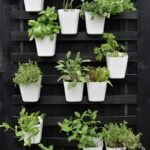Are you looking for front yard slope landscaping ideas to transform your outdoor space? Landscaping a front yard with a slope can present unique challenges, but it also offers exciting opportunities for creating a visually stunning and functional landscape. In this article, we will explore the best techniques and strategies for tackling the slopes in your front yard to maximize its potential.
When dealing with sloped terrain in your front yard, it’s important to first understand the challenges and opportunities it presents. The angle and gradient of the slope will play a significant role in determining the best landscaping solution. By assessing these factors, you can effectively plan and design the most suitable landscaping features for your sloped front yard.
Creating terraced levels and retaining walls is one of the key strategies for addressing a sloped front yard. We will discuss the benefits of terracing and different design options to make the most of your landscape. Additionally, we will explore plant selection, hardscaping options, water management strategies, lighting ideas, and maintenance tips to help you create a beautiful and functional front yard despite the challenges of having a slope.
Assessing the Slope
When it comes to landscaping a front yard with a slope, it’s crucial to first assess the angle and gradient of the slope in order to plan the best landscaping solution. One of the easiest ways to determine the slope is by using a simple level and measuring tape.
By placing the level on various points of the slope, you can get an accurate idea of how steep it is. Additionally, measuring the vertical rise and horizontal run will allow you to calculate the gradient and understand just how steep your slope is.
Another important factor in assessing a sloped front yard is evaluating potential soil erosion. A steep slope can cause water to run off quickly, carrying valuable topsoil with it. Observing patterns of water runoff during heavy rainfall or snowmelt can help assess where erosion may be occurring, guiding plans for retaining walls or other erosion control measures.
In addition to angles and erosion, it’s also important to consider how you want your landscaped front yard to function. Whether you’re envisioning terraced gardens, winding pathways, or seating areas, understanding the specific characteristics of your slope will influence design decisions that maximize both usability and visual appeal.
Assessing these elements will inform decisions about retaining walls, hardscaping options and plant selection that will ultimately shape your front yard into an attractive space that suits your needs while minimizing maintenance requirements for years to come.
Retaining Walls and Terracing
Landscaping a front yard with a slope presents unique challenges, but it also offers exciting opportunities to create a visually stunning and functional outdoor space. One important aspect to consider when planning the landscaping of a sloped front yard is the use of retaining walls and terracing. These structures not only help prevent soil erosion, but they also provide an opportunity to add dimension and interest to the landscape.
When assessing the slope of your front yard, it’s crucial to determine the angle and gradient in order to plan the best landscaping solution. This will inform decisions about where and how to install retaining walls and terraces. Here are some tips for creating these structural elements in your sloped front yard:
- Retaining Walls: Constructing retaining walls can help stabilize the slope and prevent soil from shifting or eroding during heavy rainfall or irrigation. The use of materials such as natural stone, concrete blocks, or timber can enhance the overall aesthetic of the landscape.
- Terraced Levels: Terracing involves creating flat, level surfaces on a sloped yard, which can be used for planting beds, seating areas, or other functional spaces. This technique not only adds visual interest but also improves accessibility and usability of the outdoor space.
Choosing plants for a sloped front yard is crucial not just for their aesthetic value but also for their ability to control erosion. When selecting plants for your terraced levels, consider using a mix of groundcover plants (such as creeping phlox or juniper) that will help stabilize the soil and larger shrubs or trees (such as yucca or ornamental grasses) that will add height and structure to the landscape.
In addition, incorporating hardscaping features like steps, walkways, and patio areas into your terraced design will not only make navigating the slope easier but also enhance its overall functionality and beauty.
By carefully planning and implementing retaining walls and terracing in your sloped front yard landscaping design, you can effectively manage erosion, create more usable outdoor space, and enhance the aesthetic appeal of your property.
Plant Selection
When it comes to landscaping a front yard with a slope, choosing the right plants, shrubs, and trees is crucial. Not only do they need to thrive in a sloped environment, but they also play a vital role in preventing erosion. The following are some plant selection ideas that can help you create a beautiful and sustainable landscape for your sloped front yard.
Groundcover Plants
Groundcover plants are an excellent choice for sloped front yards as they help prevent soil erosion by providing coverage and stability. Some great options include creeping juniper, vinca minor, and creeping phlox. These low-growing plants spread quickly and create a dense mat that helps hold the soil in place.
Native Shrubs
Native shrubs are well-suited for sloped landscapes since they are adapted to the local climate and soil conditions. Examples of native shrubs that thrive on slopes include mountain laurel, butterfly bush, and cascading forsythia. These types of shrubs not only add visual interest but also contribute to erosion control with their deep root systems.
Trees With Deep Roots
Planting trees with deep roots is essential for stabilizing the soil on a sloped front yard. Species like oak, cedar, and pine have extensive root systems that help anchor the soil and prevent it from washing away during heavy rainfall. Additionally, these trees provide shade and enhance the overall appeal of the landscape.
By incorporating these plant selection ideas into your front yard slope landscaping plans, you can create a visually stunning environment while effectively managing erosion control. Whether it’s groundcover plants, native shrubs, or trees with deep roots, each element plays a significant role in maintaining the stability and beauty of your sloped landscape.
Hardscaping Options
When it comes to landscaping a front yard with a slope, hardscaping options become crucial in not only creating functional spaces but also preventing erosion and controlling water runoff. One popular hardscaping solution for a sloped front yard is the construction of paths and stairs using a variety of materials such as natural stone, concrete pavers, or gravel. These materials can be used to create visually appealing pathways that are both durable and slip-resistant in sloped areas.
In addition to paths and stairs, another important consideration for hardscaping a sloped front yard is the creation of seating areas. With proper design and construction techniques, seating areas can be integrated into the landscape to provide comfortable spots for relaxation and entertainment while also ensuring stability and safety on a sloped surface. Materials like wooden decks, retaining wall blocks, or concrete can be used to build level platforms for seating areas that blend seamlessly with the surrounding environment.
Furthermore, it’s essential to consider how these hardscaping elements complement other landscaping features such as retaining walls and plant arrangements. By carefully selecting materials and thoughtfully planning their placement, homeowners can create cohesive designs that enhance the overall aesthetic appeal of their sloped front yard while effectively addressing the challenges presented by the terrain.
| Hardscaping Options | Description |
|---|---|
| Paths and Stairs | Use of natural stone, concrete pavers or gravel |
| Seating Areas | Integration into the landscape using wood, retaining wall blocks or concrete |
Water Management
When dealing with a front yard slope, one of the key aspects that need to be addressed is water management. The natural flow of water can cause erosion and flooding if not properly controlled, so it’s essential to have effective strategies in place to prevent these issues.
To address water runoff in a sloped front yard, consider implementing the following strategies:
- Grading: Properly grading the slope can help direct water away from the house and prevent pooling. This may involve reshaping the land or adding soil to create a more gentle slope.
- Retention Walls: Building retention walls at strategic points along the slope can help create terraced levels that not only add visual interest to the landscape but also help control water runoff.
- French Drains: Installing French drains can effectively remove excess water from the soil and redirect it away from areas where it could cause damage. These drains can be hidden beneath decorative gravel or rock features.
- Rain Gardens: Creating rain gardens with native plants that thrive in moist conditions can absorb excess water and reduce runoff while adding beauty to the landscape.
Implementing these strategies for directing and controlling water runoff in a sloped front yard will not only prevent erosion and flooding but also add visual appeal to your landscape.
Overall, effective water management is crucial when landscaping a front yard with a slope. By utilizing techniques such as grading, retention walls, French drains, and rain gardens, you can control water runoff while creating an attractive and functional outdoor space. Don’t let the challenges of a sloped front yard deter you – with careful planning and implementation, you can achieve a beautiful and sustainable landscape design.
Lighting
Outdoor lighting is an important factor in enhancing the safety and aesthetics of a sloped front yard. Illuminating walkways, stairs, and other features can help prevent accidents and highlight the beauty of the landscaping at night. When it comes to front yard slope landscaping ideas, there are several lighting options to consider.
One effective lighting option for a sloped front yard is low-voltage LED lights. These energy-efficient lights can be installed along pathways and stairs to provide subtle illumination without creating glare or overpowering the landscape. Additionally, solar-powered lights are a cost-effective and environmentally friendly option for adding ambiance to a sloped front yard.
Another consideration for proper outdoor lighting in a sloped front yard is the use of strategically placed spotlights or floodlights to accentuate key features such as trees, gardens, or architectural elements. This not only adds visual interest but also increases safety and security by illuminating potential hiding spots around the property.
When planning the lighting design for a sloped front yard, it’s essential to consider elements such as light direction, color temperature, and timing. Properly positioned lights can create depth and texture in the landscape while warmer color temperatures can evoke a cozy atmosphere. Timing mechanisms such as timers or motion sensors can ensure that the outdoor lighting is utilized when needed most.
| Outdoor Lighting Option | Description |
|---|---|
| Low-voltage LED lights | Energy-efficient and subtle illumination for pathways and stairs. |
| Solar-powered lights | Cost-effective and environmentally friendly alternative for adding ambiance. |
| Spotlights/Floodlights | Used to accentuate key features while increasing safety and security. |
Maintenance Tips
In conclusion, landscaping a front yard with a slope can present both challenges and opportunities for creating a visually appealing and functional outdoor space. By assessing the slope angle and gradient, homeowners can effectively plan the best landscaping solutions to make the most out of their sloped front yards.
Retaining walls and terracing can be used to create different levels, offering both aesthetic appeal and practical use of the space. Additionally, carefully selecting the right plants, shrubs, and trees can help prevent erosion while adding natural beauty to the landscape.
When it comes to hardscaping options, homeowners have a variety of materials and techniques at their disposal for creating paths, stairs, and seating areas that are both safe and visually pleasing on a sloped front yard. Proper water management is crucial in preventing erosion and flooding, so implementing strategies for directing and controlling water runoff is essential. Furthermore, adequate outdoor lighting not only enhances safety but also contributes to the overall aesthetics of a landscaped front yard with a slope.
Finally, maintaining a landscaped front yard with a slope requires regular care such as pruning, weeding, and erosion control measures. By staying proactive in maintenance efforts, homeowners can ensure that their sloped landscape remains in good condition while enjoying its beauty all year round. Overall, with careful planning and diligent upkeep, a front yard with a slope can be transformed into an attractive and enjoyable outdoor space for homeowners and visitors alike.
Frequently Asked Questions
How Do You Landscape a Front Yard With a Slope?
Landscaping a front yard with a slope requires careful planning and consideration of the natural incline. One approach is to consider using retaining walls to create terraced levels for planting beds or seating areas.
Another option is to use plants that are suitable for slopes, such as groundcovers or grasses that can help prevent erosion. Incorporating steps or pathways can also add functionality and aesthetic appeal to the sloped yard.
How to Cheaply Landscape a Steep Hill?
Landscaping a steep hill on a budget can be achieved by opting for cost-effective materials and low-maintenance plants. Using mulch or pea gravel for ground cover can help prevent erosion and minimize the need for frequent maintenance.
Planting native vegetation or wildflowers can also be an affordable way to add color and texture to the hillside, while requiring minimal care.
How Do You Beautify a Slope?
Beautifying a slope involves creating visual interest and enhancing its natural features. This can be achieved by incorporating a variety of plantings with different colors, textures, and bloom times to add diversity and appeal to the slope.
Additionally, integrating hardscape elements like boulders, rocks, or decorative retaining walls can add structure and definition to the area while reducing soil erosion. Properly placed lighting can also highlight focal points and create an inviting ambiance in the evenings.

Welcome to my gardening blog! I am passionate about plants and enjoy sharing my knowledge and experiences with others. In this blog, I will write about everything related to gardening, from tips on how to get started to updates on my own garden projects.





